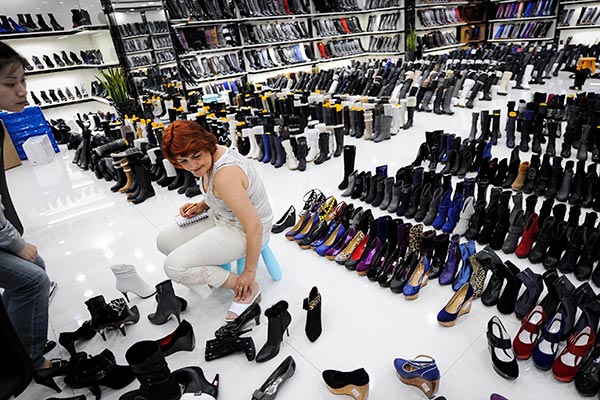
Yabao Road is known for its bargains and the Russian Market, which is situated to its north. (Photo by Feng Yongbin/China Daily)
Talk to many businesspeople here and they will wistfully recall the zest that was palpable in this place 10 or 15 years ago, but that is now well and truly gone.
Apparently with that partly in mind, the municipal government last year announced that the area was going to be given a makeover and that the downtown foreign trade market would be transformed and upgraded.
"Low-end industries are gradually being transferred to neighboring provinces, and high-end industries will be brought in and occupy buildings once occupied by retailers," Beijing News reported in January. It was possible that wholesalers would be forced to make way for research and development centers, garment designers and cultural and creative industries, the paper said.
Yang Cheng, deputy director of the Center for Russian studies at East China Normal University in Shanghai, says: "Traders engaged in business between China and Russia will have to upgrade ... meaning they will need to produce top-quality goods, and ones that are of high added value. If they don't they will be forced out of the market."
Many vendors in the Yabao Road market to whom China Daily spoke, say they now face a decision: should they leave or should they stay? Some are looking to innovate in the kind of way the authors of that giant scroll perhaps had in mind: combining their traditional ways of doing trade with e-commerce.
To better understand the predicament those traders now face we need to look a little more closely at the market's history. It sprang up in the late 1980s when the former Soviet Union strove to develop heavy industry at the expense of lighter industries that produced goods for everyday use such as clothing. Part of the breech was filled by businesses like those on Yabao Road, and eventually clothing buyers, predominantly from Eastern Europe were pouring in to buy in bulk and resold their goods in their homelands. It was a lucrative business for all concerned.
One Russian trader even imported a shipment of chenille slippers so large that it needed two aircraft to bring them in, Yin says.
In the market's heyday even those who collected cardboard packaging could earn 300,000 yuan ($45,000) a year, a staff member of Tianya Plaza says. The language that many pedicab drivers spoke as they solicited business was pidgin Russian, something that persists to this day.
By the mid-1990s the market had a reputation for selling reasonably good products at a low price, but that reputation was left threadbare when many buyers became aware that so-called quality goods they were buying were fakes. Sales were hurt, and it would take several years for them to pick up once dealers began to smarten up their act.


















































